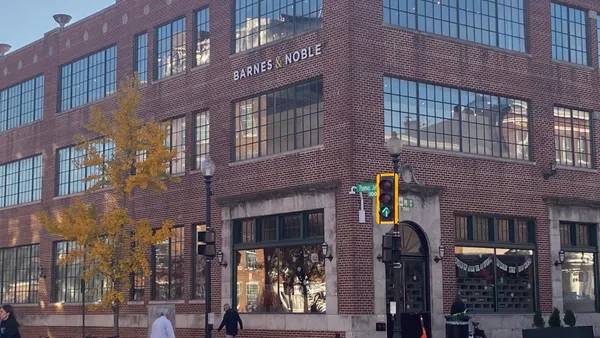Dive Brief:
- Scandit, a Swiss company that develops mobile self-checkout technology for retail, raised $30 million in Series B funding led by GV, formerly Google Ventures, according to a press release. Scandit has previously raised $13 million.
- With the new funding, Scandit said it plans to accelerate its global expansion. Among the retail brands using Scandit's technology are: Macy's, Bloomingdale's, Nike, Clarks, Saks Fifth Avenue, Scotts, Bed Bath & Beyond, Auchan, Estée Lauder, Party City, Sephora, Ahold, Migros, dm-drogerie markt, Sainsbury's, Levi's, Louis Vuitton and Aldo, according to the company's website.
- Scandit's software can be used for self-checkout, scan-and-go, mobile shopping, mobile point-of-sale, in-store order picking, order entry, inventory management, asset management, proof of delivery, shipping and receiving, and track and trace.
Dive Insight:
One of the past hurdles for new wireless technologies, like self-checkout and Internet of Things integrations, was the cost of the various bar code and other image readers. An Amazon Go "just walk out" kind of experience once seemed unattainable. Now with common mobile devices and sensors, similar tech can be within the reach of many retailers.
Scandit is one of the solution providers leading the progress in "frictionless" scan-and-go self-checkout, among other areas. Others are MishiPay, DataLogic and Selfiecart. Now Scandit has received a level of funding from the likes of a venture capital investment firm like Alphabet's GV that may allow it to leapfrog competitors and deliver more of what retailers need in-store and behind the scenes.
One of Scandit's priorities has been using the Microsoft Hololens and other wearable displays in the warehouse, TechCrunch reported. With all of Scandit's features, it creates the ability to scan a shelf of goods once, analyze it, and see the inventory data on a screen, which could be on a smart phone or AR goggles, said VentureBeat.
Among retailers, Amazon has a head start in this kind of technology both in its Amazon Go stores and in its massive fulfillment centers. Amazon is also speeding up truckers visits to its warehouse facilities with a new mobile app that allows drivers to enter cargo information and use mobile phones to scan a QR code for quick entry through the security gate, instead of a badge entry.
Scandit's long-term plan is to bring the Internet of Things to everyday objects, the company said. To achieve this, the company uses smart devices and their cameras as sensors through mobile computer vision and augmented reality (AR). This means adapting any camera-equipped device, including smart phones, wearables, drones, robots and stationary cameras. The goal is to identify, track and superimpose common objects with digital data without embedding a computer chip or connecting them online.












